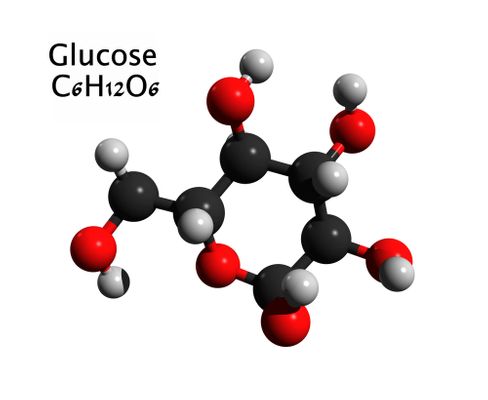14.4.1
Blood Glucose Concentration
Maintaining Blood Glucose Concentration
Maintaining Blood Glucose Concentration
Blood glucose concentration is controlled by homeostasis. The normal concentration is 90 mg 100 cm−3. It is important to maintain a stable blood glucose concentration for two reasons:


Meeting respiratory demands
Meeting respiratory demands
- Glucose is a respiratory substrate.
- There must be enough glucose in the blood to meet the demands of respiring cells.
- If glucose levels are too low, respiration rate will slow.


Maintaining water potential
Maintaining water potential
- Glucose can affect the water potential of the blood.
- An increase in blood glucose concentration will decrease the water potential of the blood.
- Water will move out of tissues into the blood by osmosis. This causes dehydration of the cells and the cells will die.
- Blood pressure also increases.
Factors Affecting Blood Glucose Levels
Factors Affecting Blood Glucose Levels
Blood glucose concentration must be monitored carefully to make sure there is a constant supply of glucose for respiration. Blood glucose levels can be influenced by:


Eating
Eating
- Eating carbohydrates causes an increase in blood glucose concentration.
- Increases in blood glucose levels are monitored by the pancreas.


Exercise
Exercise
- Exercising causes a decrease in blood glucose concentration because glucose is being used in respiration to power muscle contraction.
- Decreases in blood glucose levels are also monitored by the pancreas.


Measuring glucose
Measuring glucose
- Glucose concentration can be measured in the blood or urine.
- Urine dipstick tests contain glucose oxidase and peroxidase enzymes.
- A dipstick is placed in the urine of an individual. If glucose is present, these enzymes convert glucose into a coloured product visible on the dipstick.
- Glucose in urine can be suggestive of diabetes.
The Liver
The Liver
The liver is an organ that plays an important role in controlling blood glucose concentration. The processes that take place in the liver are:


Glycogenesis
Glycogenesis
- When blood glucose concentration is too high, the liver cells produce enzymes that convert glucose into glycogen. This glycogen is then stored in the liver cells.
- This process is called glycogenesis.


Glycogenolysis
Glycogenolysis
- When blood glucose concentration is too low, the liver cells produce enzymes that break down the glycogen stored in the cells to glucose.
- This process is called glycogenolysis.
,h_400,q_80,w_640.png)
,h_400,q_80,w_640.png)
Gluconeogenesis
Gluconeogenesis
- When blood glucose concentration is too low, liver cells also form glucose from glycerol and amino acids.
- This process is called gluconeogenesis.
1Cell Structure
1.1Cell Structure
1.1.1Studying Cells - Microscopes
1.1.2Introduction to Eukaryotic & Prokaryotic Cells
1.1.3Ultrastructure of Eukaryotic Cells
1.1.4Ultrastructure of Eukaryotic Cells 2
1.1.5Ultrastructure of Eukaryotic Cells 3
1.1.6Prokaryotic Cells
1.1.7Viruses
1.1.8End of Topic Test - Cell Structure
1.1.9Exam-Style Question - Microscopes
1.1.10A-A* (AO2/3) - Cell Structure
2Biological Molecules
2.1Testing for Biological Modules
2.2Carbohydrates & Lipids
2.3Proteins
3Enzymes
4Cell Membranes & Transport
4.1Biological Membranes
5The Mitotic Cell Cycle
6Nucleic Acids & Protein Synthesis
6.1Nucleic Acids
7Transport in Plants
8Transport in Mammals
8.1Circulatory System
8.2Transport of Oxygen & Carbon Dioxide
9Gas Exchange
9.1Gas Exchange System
10Infectious Diseases
10.1Infectious Diseases
10.2Antibiotics
11Immunity
12Energy & Respiration (A2 Only)
13Photosynthesis (A2 Only)
14Homeostasis (A2 Only)
14.1Homeostasis
14.2The Kidney
14.3Cell Signalling
14.4Blood Glucose Concentration
14.5Homeostasis in Plants
15Control & Coordination (A2 Only)
15.1Control & Coordination in Mammals
15.1.1Neurones
15.1.2Receptors
15.1.3Taste
15.1.4Reflexes
15.1.5Action Potentials
15.1.6Saltatory Conduction
15.1.7Synapses
15.1.8Cholinergic Synnapses
15.1.9Neuromuscular Junction
15.1.10Skeletal Muscle
15.1.11Sliding Filament Theory Contraction
15.1.12Sliding Filament Theory Contraction 2
15.1.13Menstruation
15.1.14Contraceptive Pill
15.2Control & Co-Ordination in Plants
16Inherited Change (A2 Only)
16.1Passage of Information to Offspring
16.2Genes & Phenotype
17Selection & Evolution (A2 Only)
17.2Natural & Artificial Selection
18Classification & Conservation (A2 Only)
18.1Biodiversity
18.2Classification
19Genetic Technology (A2 Only)
19.1Manipulating Genomes
19.2Genetic Technology Applied to Medicine
19.3Genetically Modified Organisms in Agriculture
Jump to other topics
1Cell Structure
1.1Cell Structure
1.1.1Studying Cells - Microscopes
1.1.2Introduction to Eukaryotic & Prokaryotic Cells
1.1.3Ultrastructure of Eukaryotic Cells
1.1.4Ultrastructure of Eukaryotic Cells 2
1.1.5Ultrastructure of Eukaryotic Cells 3
1.1.6Prokaryotic Cells
1.1.7Viruses
1.1.8End of Topic Test - Cell Structure
1.1.9Exam-Style Question - Microscopes
1.1.10A-A* (AO2/3) - Cell Structure
2Biological Molecules
2.1Testing for Biological Modules
2.2Carbohydrates & Lipids
2.3Proteins
3Enzymes
4Cell Membranes & Transport
4.1Biological Membranes
5The Mitotic Cell Cycle
6Nucleic Acids & Protein Synthesis
6.1Nucleic Acids
7Transport in Plants
8Transport in Mammals
8.1Circulatory System
8.2Transport of Oxygen & Carbon Dioxide
9Gas Exchange
9.1Gas Exchange System
10Infectious Diseases
10.1Infectious Diseases
10.2Antibiotics
11Immunity
12Energy & Respiration (A2 Only)
13Photosynthesis (A2 Only)
14Homeostasis (A2 Only)
14.1Homeostasis
14.2The Kidney
14.3Cell Signalling
14.4Blood Glucose Concentration
14.5Homeostasis in Plants
15Control & Coordination (A2 Only)
15.1Control & Coordination in Mammals
15.1.1Neurones
15.1.2Receptors
15.1.3Taste
15.1.4Reflexes
15.1.5Action Potentials
15.1.6Saltatory Conduction
15.1.7Synapses
15.1.8Cholinergic Synnapses
15.1.9Neuromuscular Junction
15.1.10Skeletal Muscle
15.1.11Sliding Filament Theory Contraction
15.1.12Sliding Filament Theory Contraction 2
15.1.13Menstruation
15.1.14Contraceptive Pill
15.2Control & Co-Ordination in Plants
16Inherited Change (A2 Only)
16.1Passage of Information to Offspring
16.2Genes & Phenotype
17Selection & Evolution (A2 Only)
17.2Natural & Artificial Selection
18Classification & Conservation (A2 Only)
18.1Biodiversity
18.2Classification
19Genetic Technology (A2 Only)
19.1Manipulating Genomes
19.2Genetic Technology Applied to Medicine
19.3Genetically Modified Organisms in Agriculture
Unlock your full potential with Seneca Premium
Unlimited access to 10,000+ open-ended exam questions
Mini-mock exams based on your study history
Unlock 800+ premium courses & e-books